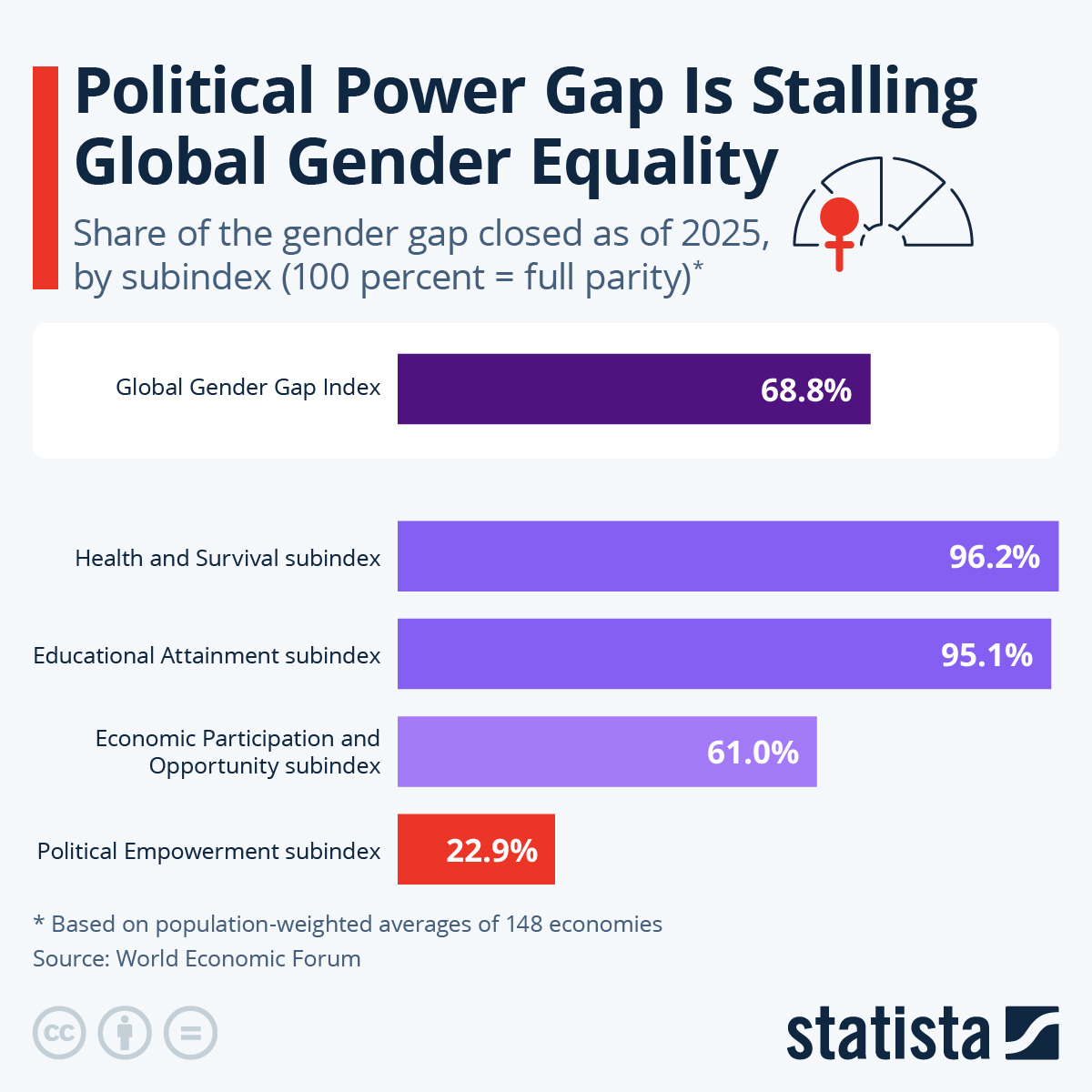It will take 123 years to reach full gender parity globally, according to the World Economic Forum’s (WEF) Gender Gap Report 2025.
While progress has been made since the report started in 2006, Statista’s Anna Fleck reports that an analysis of the constant set of 100 economies included since that year shows that such change is moving slowly.
Over the years, the report’s scope has expanded, with a total of 148 countries analyzed in the 2025 edition. Analysts created an index scoring and ranking these countries on their respective levels of gender equality, where 100 percent is considered full parity. The latest report found that the world has now closed 68.8 percent of the gender gap, marking an improvement of +0.3 percentage points since the 2024 edition. This change was calculated based on a constant set of 145 economies in both years.
But this global figure hides the huge variation that exists in the different subindexes and even those subindexes’ own components.
You will find more infographics at Statista
While it would take 17 years for equal educational attainment to be reached, it would take 135 years to close the gap in regards to economic participation and as many as 162 years for political gender parity to be reached. This is based on the trend of the population-weighted averages for the 100 constant economies featured in all editions of the index (2006-2025).
Wide variation exists across countries too.
For example, the five lowest ranked countries under the economic subindex are Sudan (31.3 percent), Pakistan (34.7 percent), Islamic Republic of Iran (34.9 percent), Egypt (40.6 percent) and India (40.7 percent).
At the top end of this subindex are Botswana (87.3 percent), Liberia (86.5 percent), Eswatini (85.6 percent), the Republic of Moldova (85.3 percent) and Barbados (84.8 percent).
The political empowerment subindex shows the widest variation across economies, ranging from just 0.6 percent in Vanuatu to 95.4 percent in Iceland.
The report states that out of the 148 places covered, only nine had closed more than half of the political empowerment gap. These were: Iceland, Finland, Bangladesh, Norway, UK, Nicaragua, New Zealand and Germany.
Loading…


















